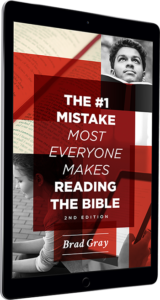Why Turkey? What’s in Turkey? What does Turkey have to do with the biblical story?
These are a few of the questions I’m often asked when people find out I’m leading biblical study trips to this country. These questions are good questions. These are the same questions I had when I first considered the possibility of taking a biblical study trip to Turkey. But the very asking of these questions exposes the reality of our unfamiliarity with the biblical story. Here’s why:
Thirteen books and letters of the New Testament were written to the residents of Turkey (ancient Asia Minor). That’s nearly half of the New Testament. Among those letters not written to Turkey, a number of them were written from Turkey. In a nutshell, without Turkey, there is no New Testament as we know it!
Two letters written to Turkey that stand out are the gospel of John and the book of the Revelation. Have you ever wondered why the gospel of John is so radically different than Matthew, Mark, or Luke? It has everything to do with who John’s audience was. Of the gospel writers, only John was writing to the land of Turkey (although Luke’s patron, Theophilus, to whom he wrote Luke and Acts to, may have resided in Turkey). John was using stories from the life of Jesus to connect to a particular people in a particular land. As one begins to understand the world of Asia Minor, one better understands the gospel of John.
Unquestionably, the most debated, cryptic, and confusing book of the New Testament is Revelation. Revelation was written to the people of western Asia Minor (Roman province of Asia). Although most people see Revelation as an apocalyptic, end times account that will only become certain in the future, most fail to recognize that it was originally a letter of encouragement written to a persecuted people who would have understood the contents of the letter at the time they received it (not at some undisclosed time two thousand plus years later). In order to better understand Revelation, one has to better understand the land of Asia Minor. Also, since the letter of Revelation was written to the people of western Asia Minor, the seven churches mentioned in chapters two and three are, of course, in present day Turkey.
The early church of Antioch (on the Orontes), where the people were first called Christians, is in Turkey.
Paul grew up in Tarsus, a strategic, bustling, commercial city, world-renowned for its school of philosophy, along the southern coast of Asia Minor, in present day Turkey.
Timothy was form the city of Lystra, in the province of Galatia, which is in Turkey.
All three of Paul’s main missionary journeys were through the land of Turkey, with the first journey almost entirely in Turkey.
The first seven Ecumenical Church Councils were all held in Turkey (Nicaea, Constantinople, Ephesus, Chalcedon).
Furthermore, because of Asia Minor’s strategic location between Rome and the rest of the world, it was of utmost importance to the Roman Empire (hence, why it became the Eastern Roman Empire in the Byzantine Period). The Empire pumped an unparallel amount of resources into making the land of Asia Minor serve its purposes well. So the ruins in Turkey are large, impressive, and they provide the best picture of the Greco-Roman world. As many have said, “If you want to see the Greco-Roman world; don’t go to Italy. Don’t go to Greece. Go to Turkey.”
(And there are many more reasons. This is just a selective list.)
So, why Turkey?
Why not?



